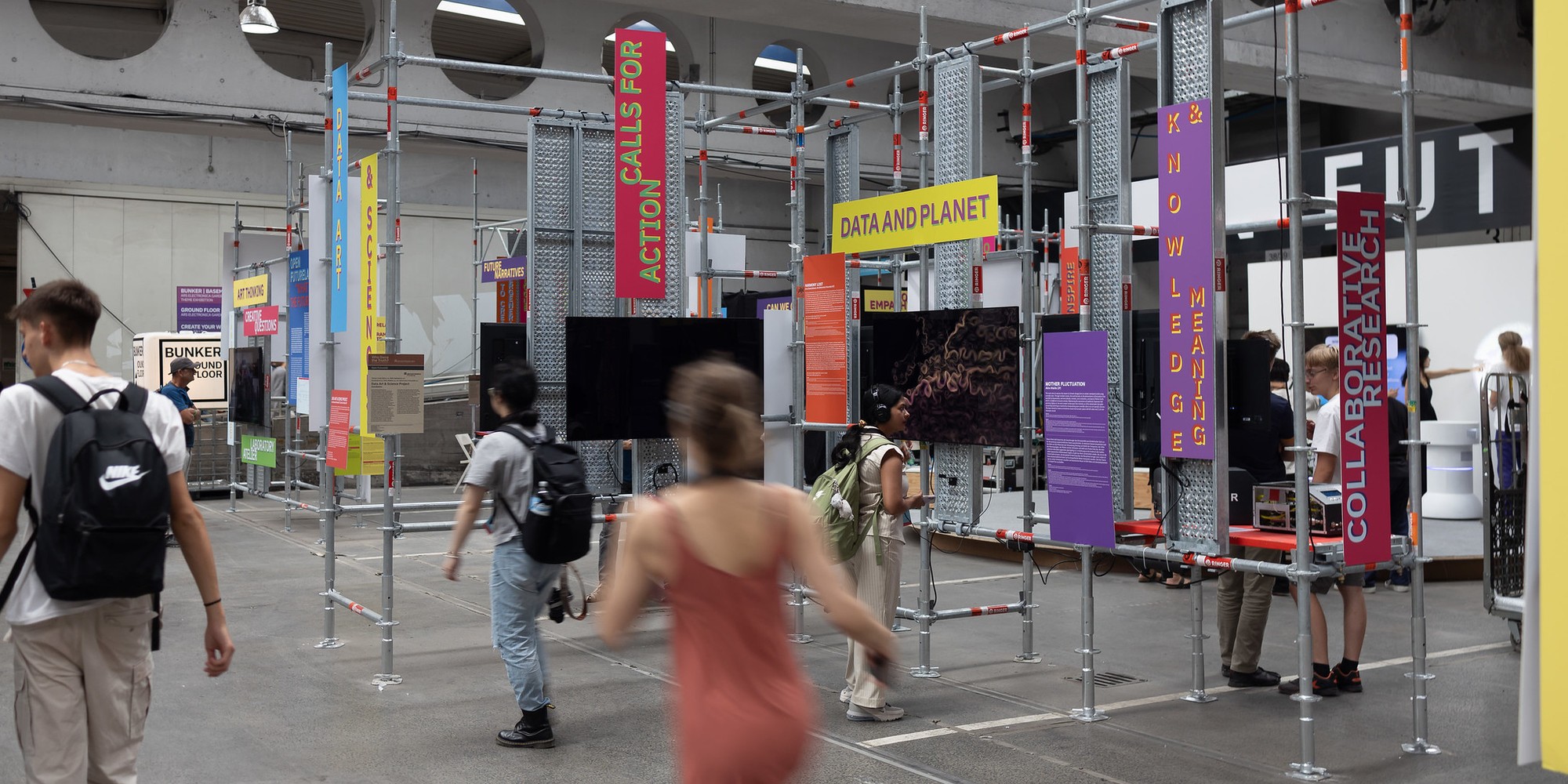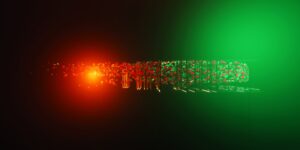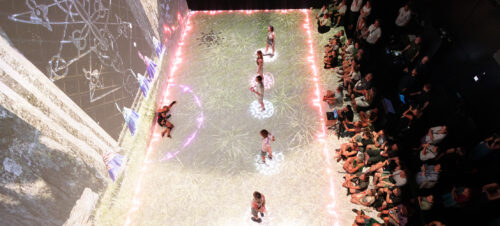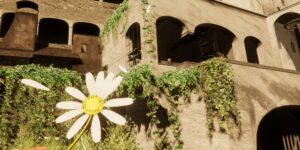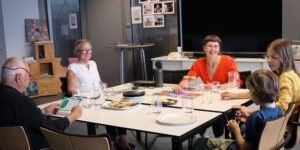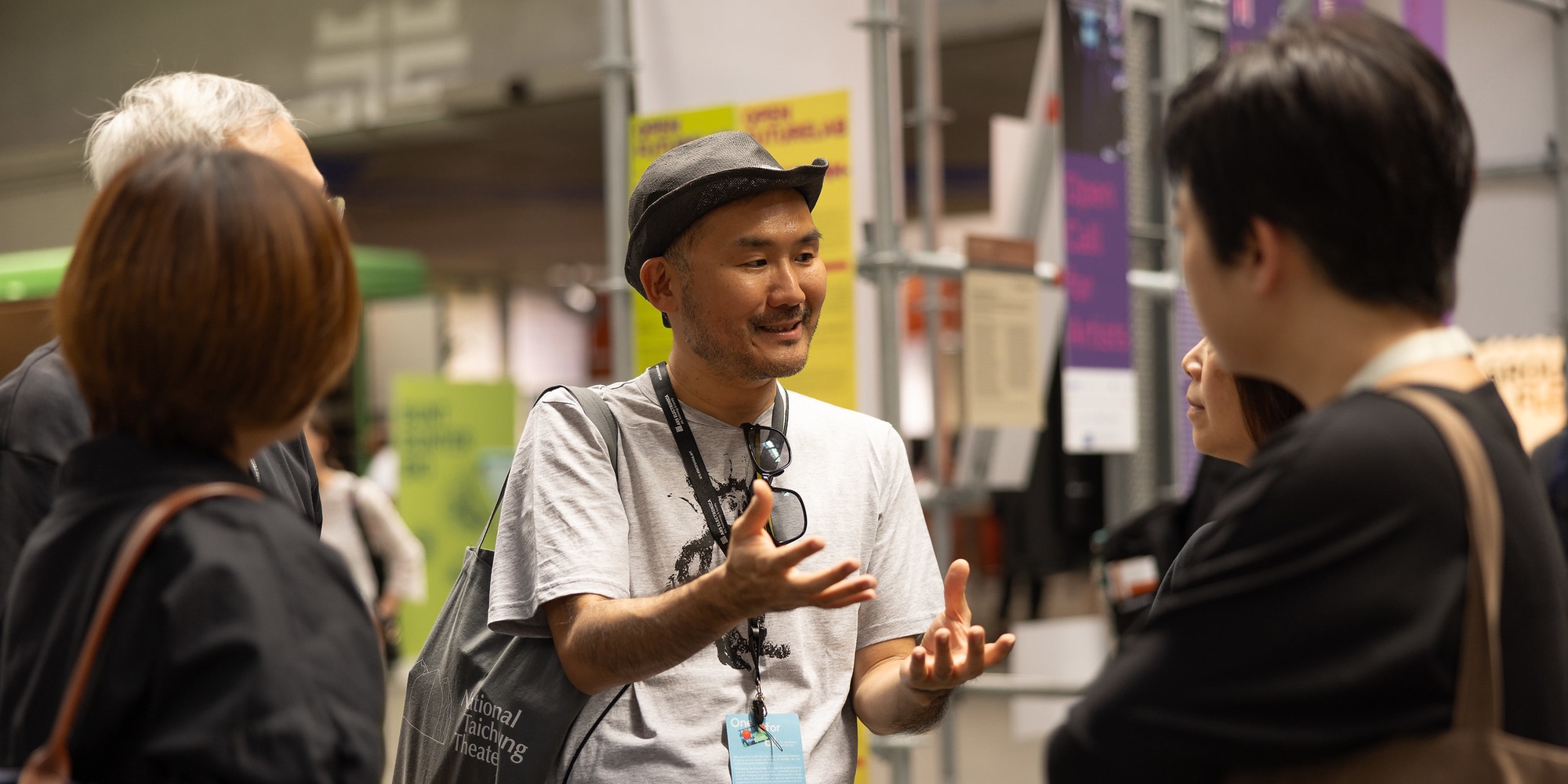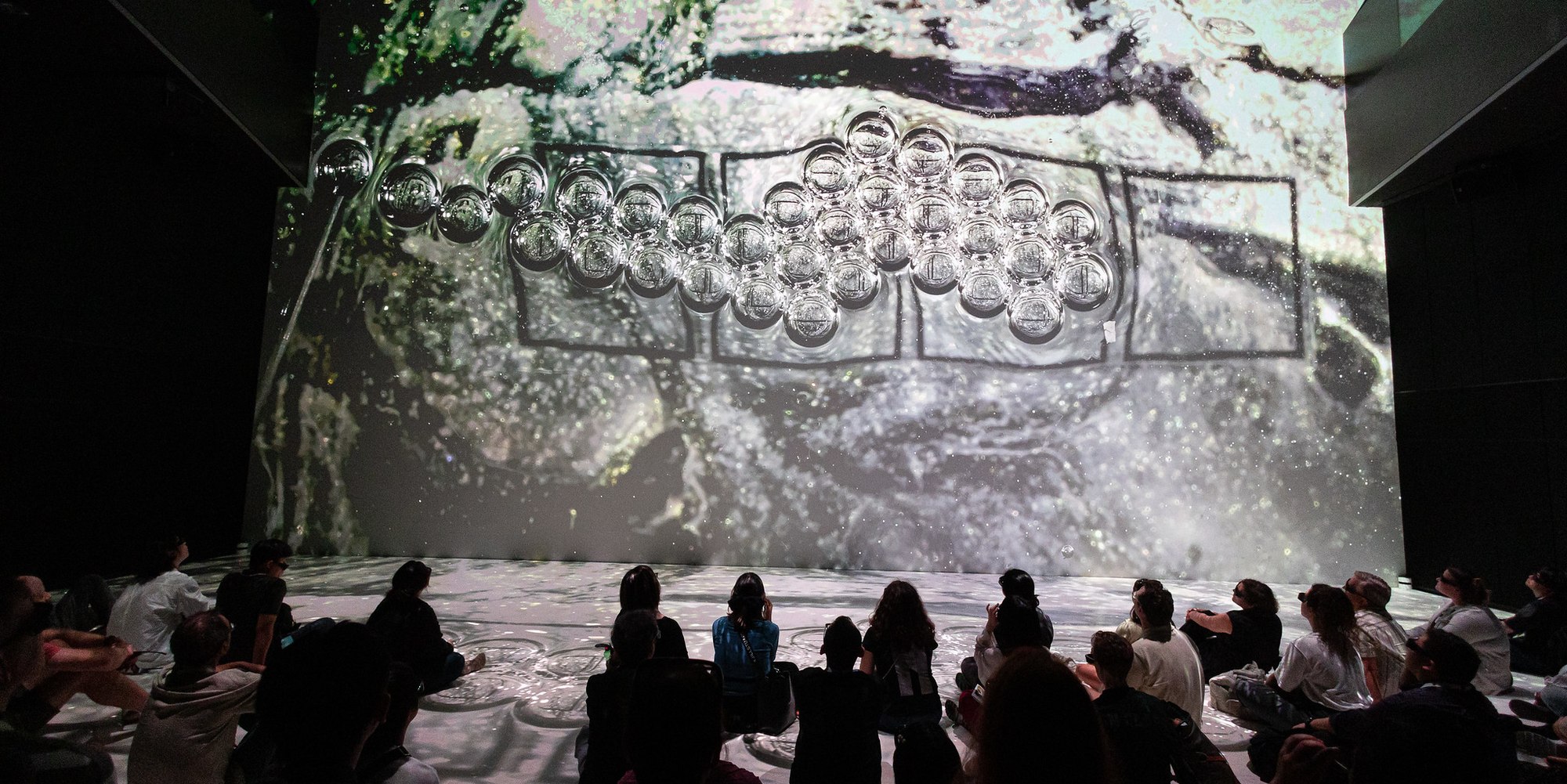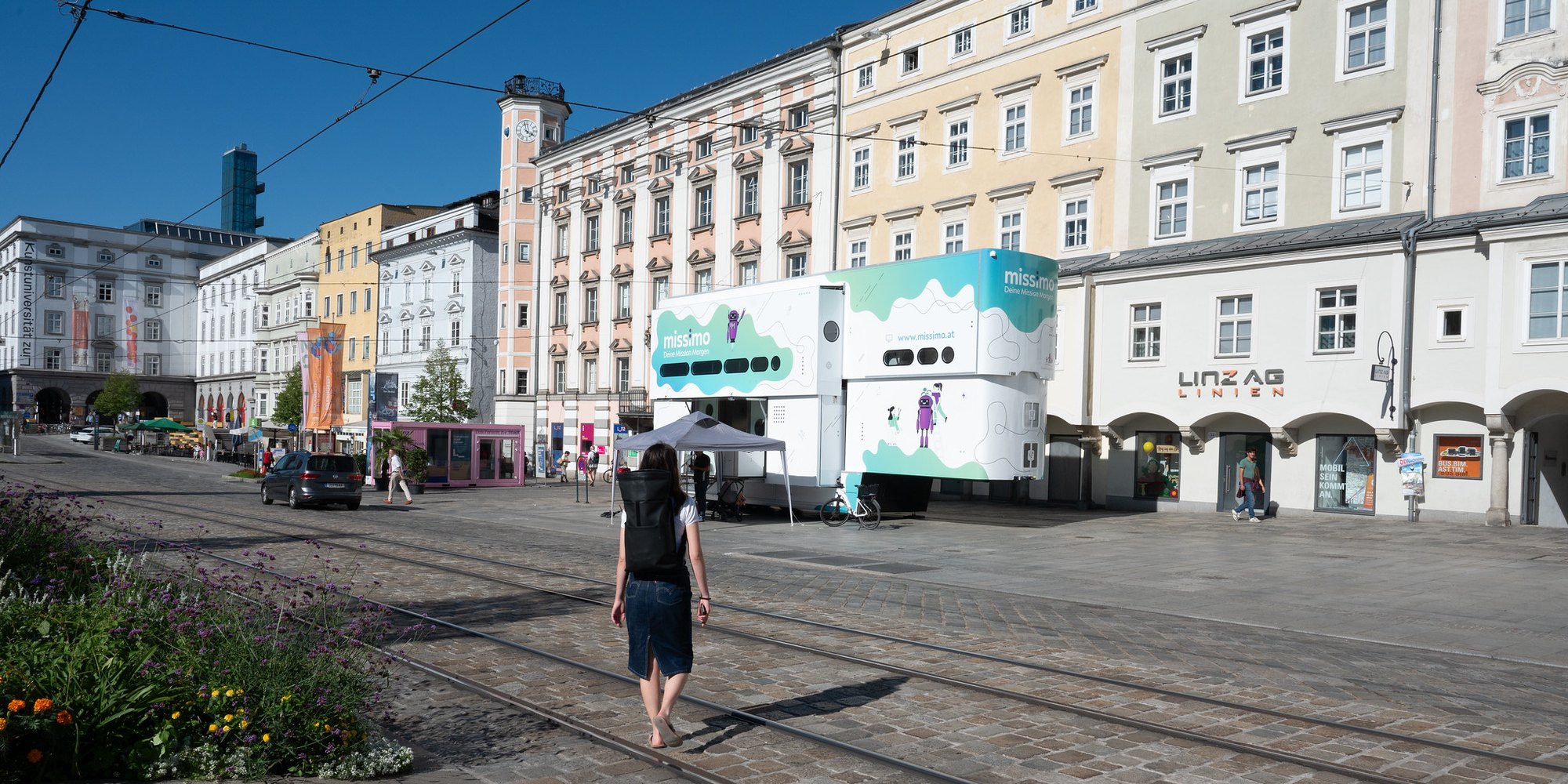Reaching out to one another, spreading hope in trying times and literally grasping technology as a social tool for the futures: this is what the Open Futurelab as part of the Ars Electronica Festival 2023, from September 6 to 10, was all about.
In POSTCITY and Deep Space 8K at the Ars Electronica Center, the Futurelab and its partners invited visitors from all over the world to exclusive presentations and prototype demonstrations, hands-on experiences, and guided tours – getting to know the diverse activities of our artistic laboratory up close. One of the highlights was once again the Futurelab Night Performances, an “Artistic Futures Report”, delivered live on Saturday evening in the Deep Space 8K.
The projects of Open Futurelab 2023
Right at the entrance of POSTCITY, the exhibition area of the Open Futurelab invited visitors to connect and discuss a variety of futures where technology is used to support individuals and society as a whole. On the center stage, the Future Teams project in collaboration with Ricoh was presented: imagining a future where humans and diverse beings from microorganisms to plants, robots and AI work together as a team. Prototype demonstrations and the visitor experience showcased three buddy bots with different communication skills – sight, smell, and hearing. “Lumi” for example has an understanding of natural language and is able to generate illuminated images, while “Foggy” balances the team’s emotional well-being by diffusing fragrances as a soothing mist. Additionally, plant-buddy “Echo” senses the environment and sings about nature and the Earth.
As part of the Data Art & Science Project in collaboration with Toyota Coniq Alpha, visitors could experience five different artistic explorations that combine data art and data science. The project was also presented in Deep Space 8K, and the artistic live gigs were one of the highlights of the Futurelab Night Performances (see below). These initial investigations and know-how are the starting point for designing an interdisciplinary educational program in collaboration with universities that have a data science faculty.
Two of the projects featured at the Open Futurelab were born out of the internal Futurelab Ideas Expedition: With Bridge 2040, visitors could experience our new card game to bridge generations and find new inspiration for the futures to be. The second project is Deep Sync, an innovative application for the Ars Electronica Center’s immersive experience space Deep Space 8K that could also be tested at the Open Futurelab. With each person’s heartbeat sonified and visualized, Deep Sync provides a unique opportunity for self-exploration and group experiences, opening up questions about empathy and human synchronization.
Anatomy of Nudging was also part of the Open Futurelab: This first installation of the project Collective Transformation Lab with partner Godot invited festival visitors to accept a challenge. They should “nudge” strangers with the help of NudgeAI to carry out a task. The goal was to step out of one’s comfort zone, to gain a sense of achievement for it and to earn collective points in the process. Next, visitors were able to experience music in a new way: with Oribotic Instruments that consist of layered electronics and textiles. Futurelab Research Assistant Chiara Chroci’s project Ori Shelter combines origami with social innovation and digital fabrication to create affordable habitats for extreme situations. This year’s Artist in Residence, Tom Bogaert (BE), also tackled a huge social question in his work Objection that was shown in the Säulenhalle at POSTCITY’s basement: He delved into the multi-billion dollar war industry by “hacking” weapons with profits from speculation in stocks of weapons companies.
On the main square in Linz, one of the Futurelab’s latest educational schemes was ready to be tried out: missimo is a project by the charitable Kaiserschild Stiftung for children aged eight to ten. It offers many experiments on topics such as AI, robotics and programming and will be visiting schools throughout Austria by truck, starting in fall.
A special experience awaited the many visitors on Saturday evening: Numerous current projects of the Futurelab became a unique experience in Deep Space 8K thanks to their artistic implementation during the live Futurelab Night Performances.
More articles on the Open Futurelab 2023 can be found on the Ars Electronica Blog:
- Theater magic reimagined: Premiere auf “Faust 2023”
- The Open Futurelab invites you: Get active for new hope
- Building bridges with cards and hearts
- EU project for radically new extended reality
Credits
Ars Electronica Futurelab: Friedrich Bachinger, Florian Berger, Patrick Berger, Alexandre Bizri, Kerstin Blätterbinder, Chiara Croci, Arno Deutschbauer, Manuel Dobusch, Marianne Eisl, Peter Freudling, Matthew Gardiner, Bernadette Geißler, Barbara Habringer, Peter Haider, Roland Haring, Denise Hirtenfelder, Horst Hörtner, Peter Holzkorn, Susanne Kiesenhofer, Anna Kuthan, Maria Mayr, Stefan Mittlböck-Jungwirth-Fohringer, Otto Naderer, Nicolas Naveau, Ali Nikrang, Anna Weiss, Hideaki Ogawa, Johannes Pöll, Daniel Rammer, Erwin Reitböck, Raphael Schaumburg-Lippe, Simon Schmid, Yoko Shimizu, Cyntha Wieringa
